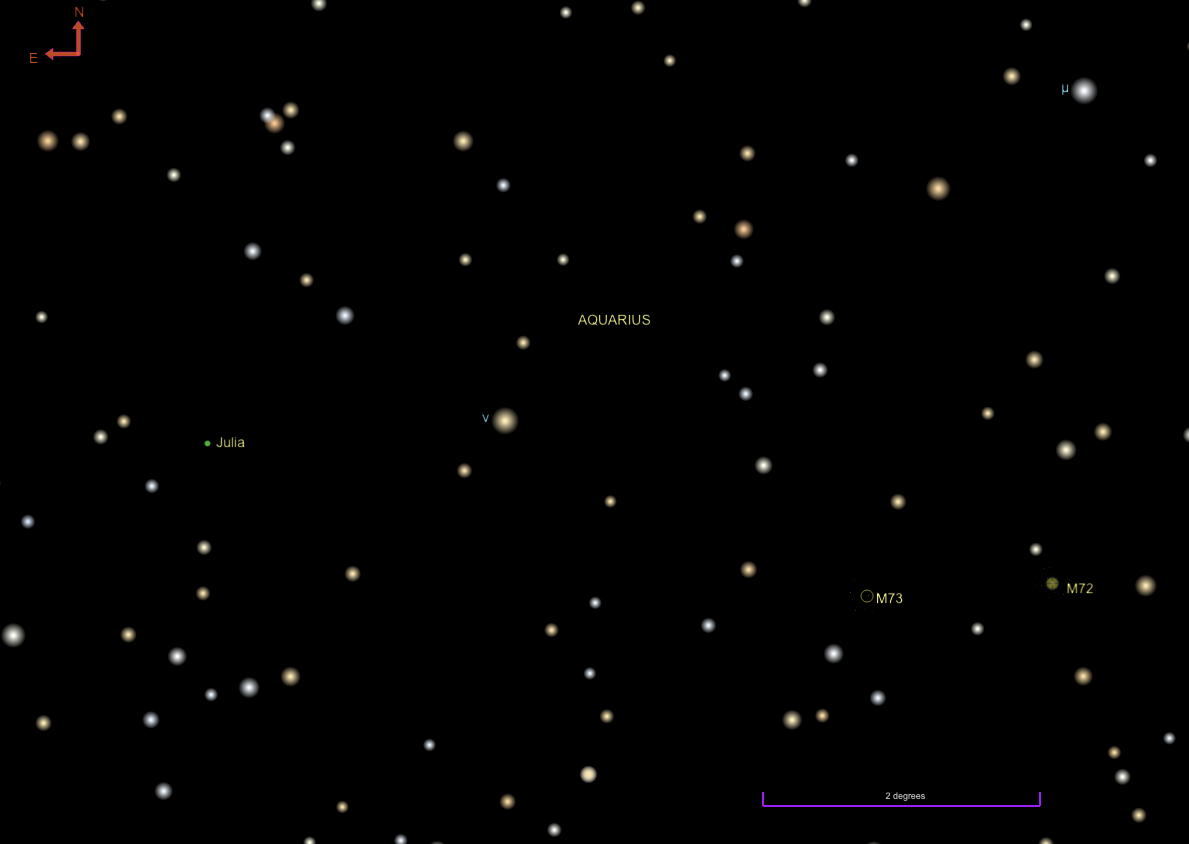Moving through western Aquarius, 89 Julia is visible all night and points the way to two bright Messier objects nearby.
Asteroid Julia is now at opposition in the constellation Aquarius. Look just east of the star Nu Aquarii tonight to find it. Credit: Alison Klesman (via TheSkyX)
- Asteroid 89 Julia reached opposition at 5 A.M. EDT, exhibiting a magnitude of 8.5, observable with binoculars or telescopes.
- Visible throughout the night, Julia’s highest point in the sky occurred around 1 A.M. local daylight time, situated in western Aquarius, near magnitude 4.5 Nu Aquarii.
- Nearby celestial objects include M73 (a potential asterism), and M72, a globular cluster best viewed with larger telescopes (8 inches or greater).
- Observational timing is aided by provided sunrise (6:08 A.M.), sunset (8:01 P.M.), moonrise (9:24 P.M.), and moonset (8:36 A.M.) times (local time at 40° N 90° W).
Asteroid 89 Julia reaches opposition at 5 A.M. EDT. Shining at magnitude 8.5, it’s easily reachable with binoculars or any telescope.
This evening Julia rises around sunset and is visible all night, reaching its highest point around 1 A.M. local daylight time. A few hours earlier, though, around 11 P.M. local daylight time, Julia is 30° high in the southeast, located in western Aquarius. You can find the main-belt world in binoculars or a telescope, just over 2° due east of magnitude 4.5 Nu (ν) Aquarii.
As a bonus, M73 lies nearby, some 4.8° west-southwest of Julia tonight. Shining at magnitude 9.0, this object probably isn’t a true open cluster but more likely a chance superposition of four stars, shining between magnitude 10 and 12. If you want to view a cluster that is truly real, though, you don’t have to look much farther: 1.5° west of M73 is magnitude 9.3 M72, a compact globular cluster. It may appear mostly like a smudge of light, as larger telescopes (8 inches or more) are really needed to begin resolving its tightly packed stars.
Sunrise: 6:08 A.M.
Sunset: 8:01 P.M.
Moonrise: 9:24 P.M.
Moonset: 8:36 A.M.
Moon Phase: Waning gibbous (93%)
*Times for sunrise, sunset, moonrise, and moonset are given in local time from 40° N 90° W. The Moon’s illumination is given at 12 P.M. local time from the same location.
For a look ahead at more upcoming sky events, check out our full Sky This Week column.
